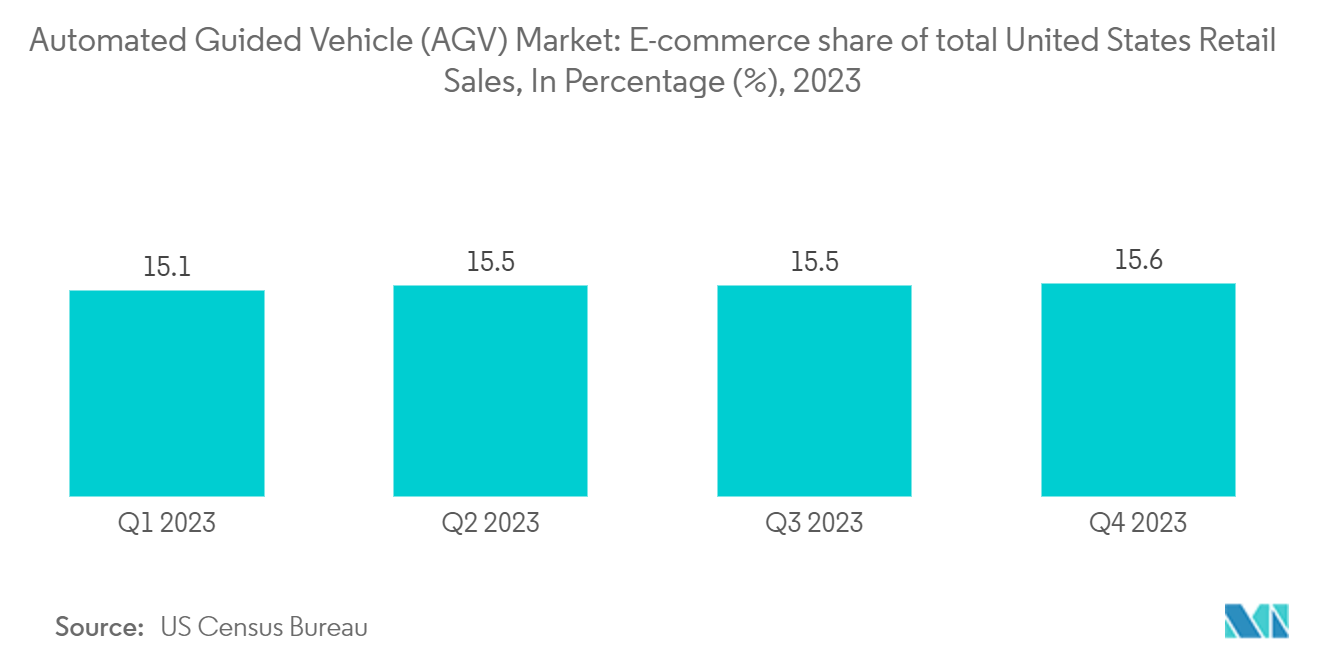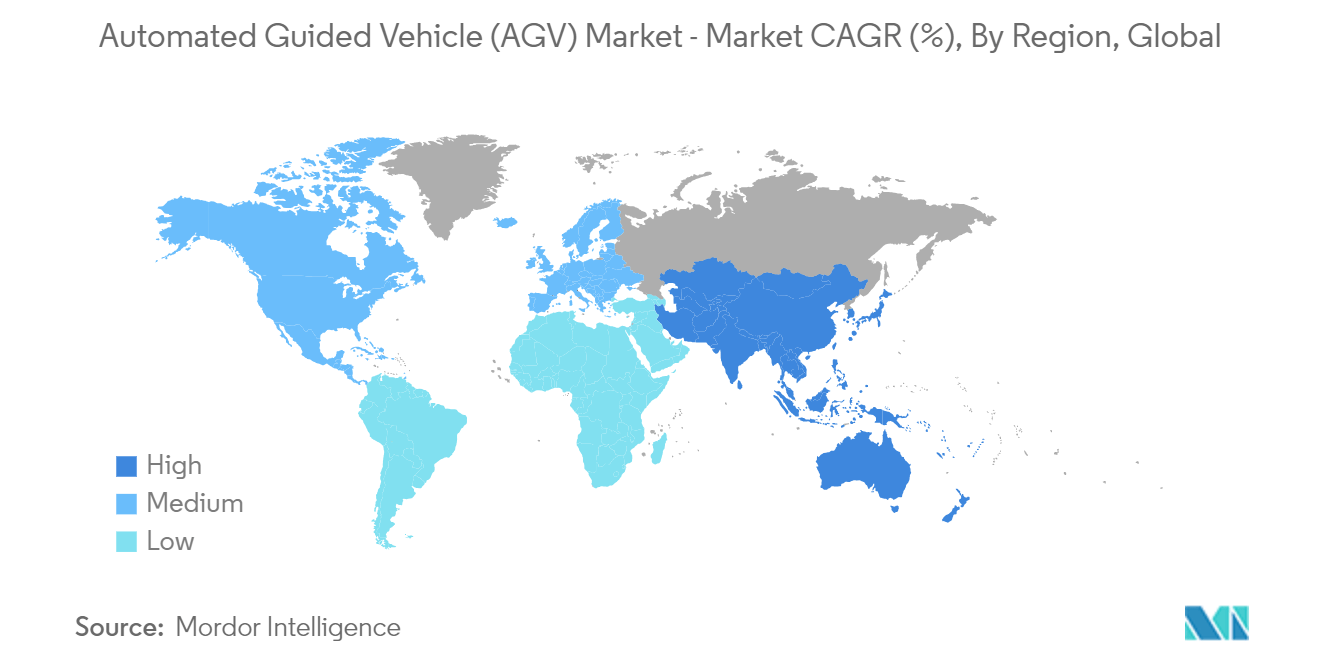Market Trends of AGV Industry
Rapid Growth of E-commerce Demanding Higher Efficency
- Despite growth in the manufacturing industry, considerable demand from the warehousing and logistics sector is dedicated to e-commerce activity. For instance, the Canadian warehouse portfolio is mainly comprised of e-commerce, which is estimated to make up more than 50% of the country's warehouse business.
- The deployment of AGVs provides an opportunity for different areas in e-commerce. Specifically, the AGVs are suited for fulfillment operations involving large quantities of small orders for large SKU ranges spread across large warehouse areas. Using autonomous robots to perform horizontal traveling can increase order fulfillment efficiency.
- With the introduction of always-on e-commerce, the demand for faster responses, and the need to manage a more significant number of stock-keeping units with fewer errors, warehouses need to scale up and meet the standards of an intelligent, efficient, and automated warehouse. Such increasing globalization and the rise of online retail and bulk retail have increased demand for AGVs in the retail industry.
- The rising demand for e-commerce companies to cater to the increasing number of single-day delivery orders, both in advanced and emerging economies, has resulted in a significant increase in efficiency owing to the commercial viability of these schemes. E-commerce warehouses carry out the single-day delivery method with the aid of AGVs.
- The growth in the e-commerce industry, along with the need for efficient warehousing and inventory management across the world, are driving the market studied. For instance, according to the Census Bureau of the Department of Commerce, in the fourth quarter of 2023, the share of e-commerce in total US retail sales stood at 15.6%, up from the previous quarter. From October to December 2023, retail e-commerce sales in the United States hit over USD 285 billion, the highest quarterly revenue in history.
- The rapidly changing retail market compels distribution centers to seek out and implement innovative, flexible, and automated approaches to e-commerce order fulfillment. Such a rise in e-commerce purchases is expected to push companies to deploy automated material handling equipment in their operation process to enhance smooth workflow.
- Moreover, supply chains began using AGVs in distribution centers in response to increased e-commerce demand, allowing industries to function at high productivity. AGVs' use has expanded in sectors like pharmaceuticals to keep up with demand and maintain sanitation. Hospitals and other healthcare facilities utilize AGVs to undertake the contactless transfer of food, trash bins, linens, and sterile supplies.

Asia-Pacific Expected to Witness Significant Growth
- The AGV market in China is primarily driven by the country's proliferating manufacturing industry. China has the largest manufacturing industry in the world, and it is also a key contributor to the country's economic growth.
- China is anticipated to be a crucial market for automated guided vehicles, given the expanding retail sector and increased investments. Rising consumption rates and the growing demand for larger warehouses are also driving the need for AGVs.
- Moreover, China is a major adopter of Industry 4.0, and the region is home to some of the most advanced manufacturing facilities in the world, ahead of regions like the European Union, the United States, and Japan.
- According to the World Economic Forum, of the 69 factories around the world now considered leaders using Industry 4.0 technologies, China is now home to 20, followed by 19 in the European Union, 7 in the United States, and 5 in Japan. Besides being the foundation for plant-wide automation, the automated storage and retrieval system also serves as a foundation for Industry 4.0.
- Moreover, with the increasing demand for e-commerce in emerging countries, such as India, China, and neighboring countries, e-commerce companies have been deploying AGVs at warehouses significantly. According to the IBEF, Indian e-commerce is projected to witness a CAGR of 27% to reach USD 163 billion by 2026. Similarly, in FY23, the gross merchandise value (GMV) of e-commerce in India reached USD 60 billion, increasing 22% over the previous year.
- In addition, several companies are adopting AGVs to support automation in the business, further driving the market. For instance, in April 2024, Busan Newport's Dongwon Global Terminal (DGT) held its formal inauguration ceremony. This was a significant milestone in Korea's port automation journey, as the terminal is the first in the country to use AGVs for horizontal transportation. At Busan Newport, DGT is the seventh container terminal. Automated yard cranes, also known as "transfer cranes," are present in all six of the other terminals at Busan New Port. However, DGT is the first to use AGVs.
- Similarly, in August 2023, Westports Malaysia announced plans to investigate the potential of using electric automated guided vehicles in future terminal development plans.


